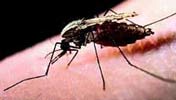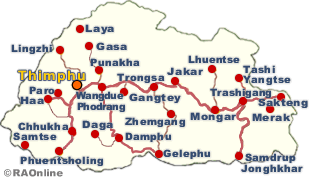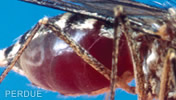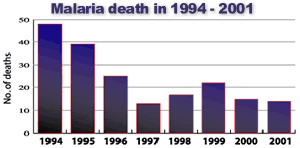 |
Bhutan Health |
 |
Bhutan's Tourism Thimphu |
|
|
 |
| Report:
2004 - Malaria still a killer |
 |
 |
| With 14
people dead last year, malaria continues to be one of the killer diseases
in Bhutan despite various strategies to stem the problem.
According
to a report from the National Malaria Control Programme (NMCP),
the disease claimed 15 lives the year before last, taking the death
toll between 1998 to 2001 to 68. |
|
1999 also saw one of the highest number of malaria victims since 1996 (25 deaths) with 22 deaths. Last year's outbreaks in Nunai village
of Samdrup Jongkhar, with 109 cases including four deaths, and
in Chuzagang village of Sarpang district which saw 55 cases and
four deaths frustrated local and central health officials who were
trying to contain it.
The
number of infections by P. falciparum (Pf), one of the two female
anopheles mosquitoes that transmits malaria and one that kills if quick
and appropriate treatment is not given, has steadily increased and almost
doubled from 3,403 in 1998 to 6,380 in 1999.
It was only in the recent two years that it showed signs of decline. P.vivax, the other species found in Bhutan, does not lead to death.
 |
| Although,
relentless control measures like Insecticide Treated Bed Net (ITBN) and awareness programmes are put forth, the bulk of the patients were from Sarpang
and Samdrup Jongkhar, the two predominantly sub-tropical dzongkhags
that have traditionally been the most malaria-plagued. A considerably high
infection was recorded in Chukha and Samtse as well. However, compared
with the past, there has been a "marked" reduction of malaria related illness
and deaths, say the report. |
|
The
number of malaria patients has decreased from 39,852 in 1994 to 5,982 last year while the number of deaths has reduced to 14
from 48, although a harrowing experience in the closing years of the
last decade got health officials off-guard. From 6,995 positive cases in 1998,
the number almost doubled in 1999,
and the death toll was 17 and 22 respectively.
There
are no sure reasons as to the sudden upsurge, but one explanation may be
due to the resettlement of people from less malaria prone areas to malaria
endemic regions like Sarpang and Samdrupjongkhar, a health spokesman
from Gelephu said.
 |
| About 0.2 million people in districts like
Sarpang, Samdrupjongkhar, Samtse, Chukha, and Zhemgang are at risk of malarial
infection, while between age 15 to 49 years is the most vulnerable
group followed by 5 to 14 years age, say the report. |
|
But
those living in the colder climes can also get infected because of "increasing
mobility of these population groups into the high malaria transmission
localities". Recently, health centers at non-malaria areas regularly received
"sporadic" malaria cases.
 |
| Fighting
the winged killer seems to be not so easy though.It started developing
resistance to the DDT insecticide in the early 80's and killed many
people until in 1995 when it was abandoned and replaced with a new insecticide, pyrethroid.
In 1998,
the revised control strategy advocated an "impregnation" programme that
prescribed liquid form of pyrethroid to be sprayed over mosquito nets alone
rather than over the whole house. |
|
However,
with no standardized "vector" control strategy and treatment procedures,
the risk of development of resistance to insecticides and drugs by the
mosquito is still present, says the report. Lack of proper malaria
knowledge among dwellers in endemic areas and absence of skilled manpower
like research and epidemiologist personnel in the NMCP is also recognized
as an obstacle.
To
combat malaria an awareness campaign was started as a prevention and control
strategy in the endemic areas and will be continued in the 9th FYP, along
with the present ITBN programme. Education about mosquito net usage and community participation will also be intensified;
besides a rapid response team is also formed to battle outbreaks in the
future.
| This
article was contributed by KUENSEL, Bhutan's National
Newspaper |
 |
| Links |
 |
 |
 |
External
links |
|






